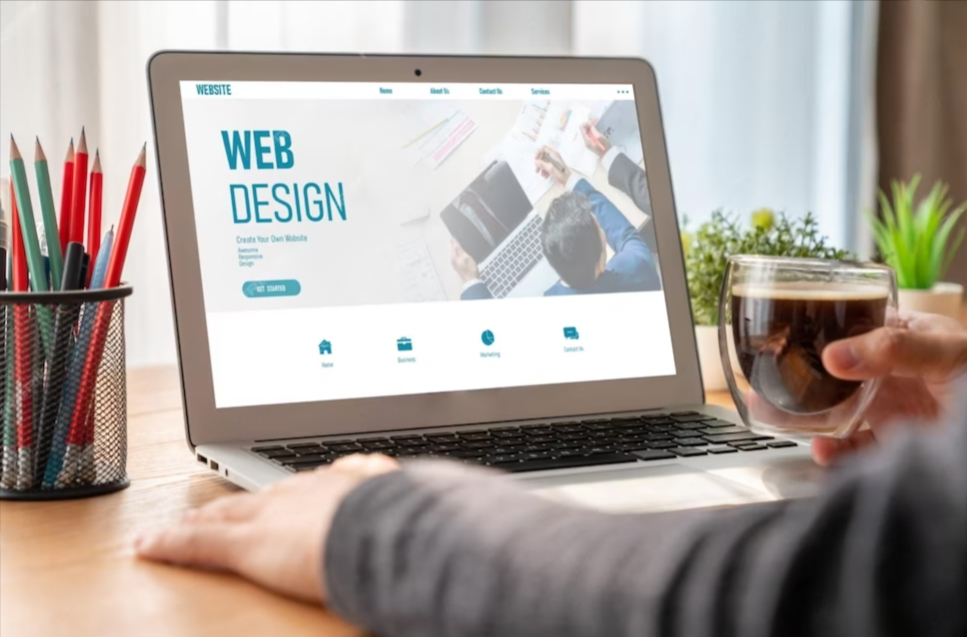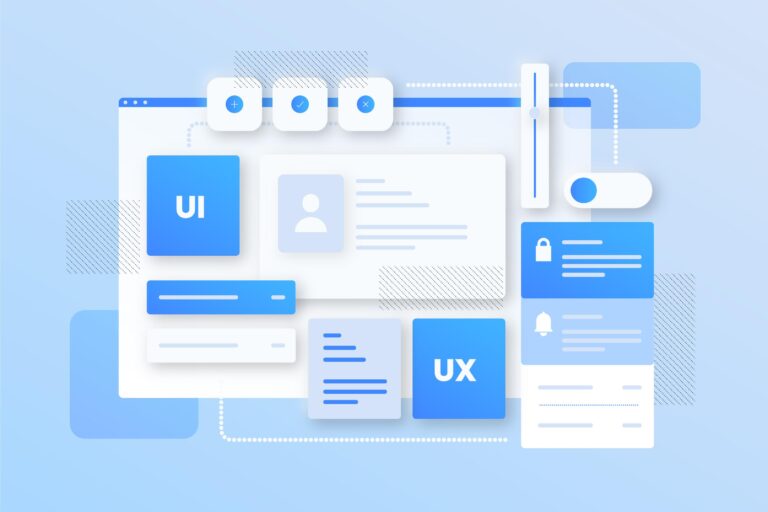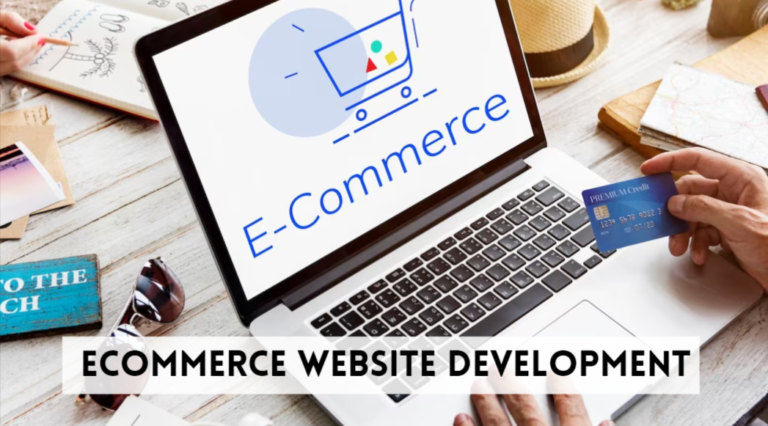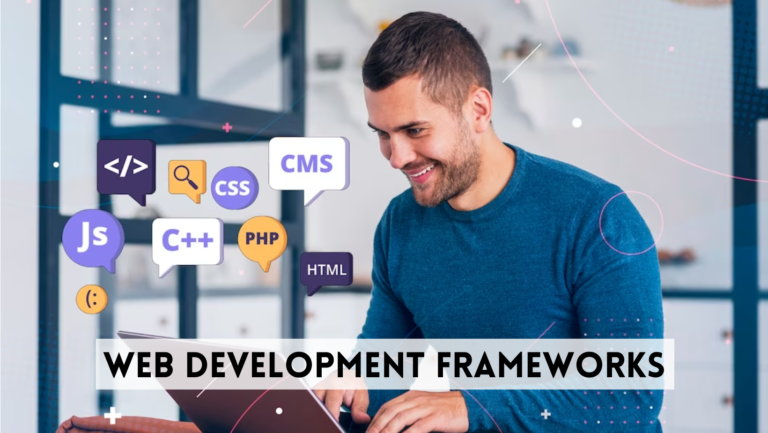10 Web Design Statistics that Are Essential to Know in 2024
In today’s digital landscape, web design is more crucial than ever. A well-designed website isn’t just about aesthetics; it can significantly impact your online success. To illustrate this point, we’ve compiled 25+ web design statistics for 2024 that emphasize its importance and the latest trends shaping the web design bureau and the designers’ market.
The Web Design Landscape in 2024: An Overview
In the rapidly evolving digital sphere, keeping up with the latest web design insights is essential to stay competitive. The importance of websites has grown, becoming a primary touchpoint for businesses to connect with their audiences.
-
Mobile-Friendly Design Reigns Supreme
As we delve deeper into 2024, the significance of mobile-friendly web design is unparalleled. With mobile internet usage expected to surpass desktop, it’s not just a trend; it’s a necessity. Having a responsive web design is essential to ensure that your website adapts seamlessly to various devices – be it smartphones, tablets, or desktops. This adaptability guarantees an optimal user experience regardless of the device used.
Furthermore, prioritizing mobile-friendliness is not just about accommodating mobile users; it directly influences your search engine ranking. Major search engines like Google favor mobile-responsive websites, recognizing their importance in catering to the majority of Internet users. When your website is responsive, you improve your site’s chances of being discovered, visited, and appreciated.
In essence, mobile-friendly design isn’t an extra feature; it’s a foundation that defines the user experience and the visibility of your website in today’s digital landscape.
-
Speed Matters for User Retention
The speed at which your website loads has a profound impact on user behavior and, consequently, the success of your online presence. The statistics tell a clear story – nearly half of users expect a web page to load within two seconds. If your website falls short of this expectation, there’s a high likelihood of visitors hitting the back button and opting for a faster alternative.
This phenomenon directly translates to high bounce rates, a metric that search engines consider when evaluating a site’s quality. A high bounce rate can negatively affect your search engine ranking. Conversely, a speedy website fosters a positive user experience, reduces bounce rates, and enhances SEO.
To achieve optimal page load speed, various techniques can be employed, such as image optimization, minimizing HTTP requests, browser caching, and leveraging content delivery networks (CDNs). Ensuring your website loads rapidly is paramount to retaining visitors and improving its search engine performance.
-
Visual Content Dominates
The digital world is becoming increasingly visual, and users are naturally drawn to websites that feature compelling visual content. This encompasses a wide array of elements, including images, videos, infographics, and more.
Why is visual content so significant? It’s quite simple – it enhances user engagement. Users tend to interact more with content that integrates visuals, and this interaction results in a longer time spent on your site, more shares, and ultimately, more conversions. Visual content is instrumental in conveying information effectively and creatively, making your website more appealing and memorable.
When it comes to web design, the integration of visual elements is not just an option but a strategic choice that can set you apart in the digital landscape. However, it’s crucial to ensure that your visual content is well-optimized, as large media files can significantly impact page load speed. Striking the right balance between engaging visuals and performance is key.
-
User Experience (UX) is a Priority
User experience (UX) remains at the forefront of web design priorities. In essence, UX embodies the idea that your website should be user-centered, offering an experience that is intuitive, enjoyable, and efficient.
This philosophy centers around user-friendly navigation, clear and organized layouts, and intuitive interfaces. Ensuring your website is easy to navigate is paramount to keep visitors engaged and encourage them to explore your site further.
UX doesn’t end at the desktop or mobile screens; it extends to all interactions your audience has with your website. This includes user interactions with your content, forms, shopping carts, and any other features or functions. A positive UX keeps visitors satisfied, leading to better user retention and the achievement of your website’s objectives.
The current market is highly competitive, and user experience can serve as a powerful differentiator. A website that prioritizes UX is more likely to stand out and leave a lasting impression on its visitors, enhancing brand loyalty and success in the designers’ market.
-
Secure with HTTPS
In today’s digital landscape, ensuring a secure connection through HTTPS is not just a bonus feature; it’s a fundamental necessity. Websites that use HTTPS create a safe and encrypted environment for users, ensuring their data and interactions are protected.
This additional layer of security is signified by the padlock symbol in the address bar, signifying to users that your website is trustworthy. Users are more likely to interact with websites that provide secure connections, and search engines, such as Google, favor secure websites, ranking them higher in search results.
Incorporating HTTPS into your web design is essential for maintaining user trust and improving your search engine ranking. The process of obtaining an SSL certificate is now more straightforward and accessible, making it an imperative addition to your website design.
-
Content Accessibility for All
As the digital world expands, inclusivity and accessibility are becoming paramount concerns. Every user should be able to access and interact with your website, regardless of any disabilities they may have. This principle extends to individuals with visual, auditory, or cognitive impairments.
To ensure your website is accessible to all, you must prioritize certain elements, such as:
– Textual Content: Use clear and concise language. Properly structure headings, use alt text for images and ensure good color contrast for text readability. Web accessibility aids not only those with disabilities but also improves overall SEO.
– Keyboard Navigation: Enable users to navigate your site using only a keyboard. This is crucial for individuals who cannot use a mouse or have limited dexterity.
– Adaptive Design: Employ responsive web design techniques, ensuring your website functions seamlessly on various devices and screen sizes. This is particularly vital for users with disabilities, who may rely on different assistive technologies.
– Assistive Technologies: Ensure compatibility with assistive technologies like screen readers. Properly labeled forms and buttons, well-structured content, and organized layout are essential for this.
– Compliance with Standards: Familiarize yourself with international accessibility standards, such as the Web Content Accessibility Guidelines (WCAG), and ensure your website adheres to these.
An accessible website is not only a moral imperative but also opens your online content to a broader audience. Moreover, accessibility is a factor that search engines consider when ranking websites, making it essential for your web design strategy.
-
Optimized for Search Engines
Search engine optimization (SEO) continues to be a crucial aspect of web design in 2024. A well-designed website that is not optimized for search engines may not fulfill its potential. The goal is to enhance your website’s visibility in search engine results pages (SERPs) and attract organic traffic.
Key SEO strategies to incorporate into your web design include:
– Keyword Research: Identify relevant keywords and phrases to target within your content, as this strategy aids your website in appearing more prominently in search results when users query these keywords. Especially focus on
low competition keywords that can offer your content an advantage in search engine rankings. By understanding the search terms your audience uses, you can optimize your content accordingly, ultimately boosting its visibility and relevance.
– Quality Content: Develop high-quality, informative, and engaging content that satisfies user intent and keeps visitors on your site.
– Meta Tags: Craft compelling meta titles and descriptions, as these are the first pieces of information users see on SERPs.
– Mobile Optimization: Ensure that your website is mobile-responsive, as mobile-friendliness is now a ranking factor for Google.
– Fast Load Times: Optimize your website for quick page loading. Slow load times can lead to high bounce rates and negatively affect your search engine ranking.
– Quality Backlinks: Build authoritative and relevant backlinks to your site to demonstrate your site’s credibility and authority.
– Technical SEO: Pay attention to technical aspects, such as XML sitemaps, clean URLs, and proper header tags.
Remember that SEO is an ongoing process. Regularly monitor and adjust your strategy as search engine algorithms evolve.
-
Consistency in Branding
Consistency in branding is a fundamental principle in web design. Your website should effectively represent your brand identity, ensuring a cohesive and memorable user experience.
This consistency extends to:
– Colors and Typography: Use your brand’s colors and typography consistently throughout your website. This creates a unified and recognizable look.
– Logo Placement: Position your logo prominently and consistently across your site. Users should quickly identify your brand on every page.
– Voice and Tone: Maintain a consistent voice and tone in your content. This helps build brand personality and resonates with your target audience.
– Messaging: Ensure your website’s messaging aligns with your brand’s values, mission, and vision.
A consistent brand identity fosters trust and credibility. It helps visitors understand your values and builds a strong brand image in the competitive designers’ market.
-
Use of Chatbots and AI
As technology advances, integrating chatbots and artificial intelligence (AI) into your web design becomes a valuable trend. Chatbots provide instant support and assistance to users, enhancing their experience and engagement.
AI-driven features can:
– Personalize Content: AI can analyze user behavior and preferences to deliver personalized content, enhancing user engagement and conversions.
– Recommendations: Implement product or content recommendations based on user interactions and historical data.
– Chat Support: Offer 24/7 chat support with chatbots, ensuring users can get answers to their queries at any time.
– Data Analysis: Utilize AI to analyze user data, providing insights into user behavior, trends, and areas for improvement.
By incorporating AI and chatbots, you can offer efficient support, guide users to relevant content, and collect valuable data to refine your website’s user experience.
-
Social Media Integration
Social media plays a significant role in web design, especially in 2024. Seamless integration of social media elements, such as social sharing buttons and feeds, enhances user engagement and helps build your brand’s online presence.
Key strategies for social media integration include:
– Sharing Buttons: Allow users to easily share your content on their social media platforms. This expands your content’s reach and drives more traffic to your website.
– Embedded Feeds: Display your social media feeds on your website. This keeps your site current and connects visitors with your social media presence.
– Follow Buttons: Enable users to follow your social media profiles directly from your website, encouraging ongoing engagement.
– User-Generated Content: Showcase user-generated content on your website to build a sense of community and authenticity. This can include displaying reviews, comments, or photos shared by your audience.
– Social Login: Allow users to log in or sign up using their social media profiles, simplifying the registration process and fostering user engagement.
Integrating social media effectively can significantly boost your brand’s online visibility, encourage user participation, and extend your reach in the designers’ market.
Wrap Up
the landscape of web design in 2024 is characterized by a dynamic interplay of mobile-friendliness, user experience, security, and SEO optimization. Embracing these trends is not a choice but a necessity to thrive in the digital realm. The mobile-friendly design, driven by the surge in mobile internet usage, is a foundational pillar that influences both user experience and search engine ranking. Speed, as a determinant of user retention and SEO success, cannot be understated. Visual content captivates audiences, enhancing engagement and conveying information effectively. User experience (UX) must remain at the forefront, shaping websites into user-centric platforms.
Security through HTTPS and web accessibility for all ensure trust and inclusivity. Consistency in branding fosters recognition and loyalty. AI-driven chatbots, social media integration, data-driven decisions, and e-commerce functionality pave the way for enhanced engagement and conversion. As we move forward, web design evolves into an even more user-centric, data-driven, and inclusive space, offering endless opportunities for brands in the competitive digital market.
FAQs
Q: Why are web design statistics important for my website?
A: Web design statistics offer valuable insights into current trends, user preferences, and emerging technologies. By staying informed, you can make data-driven decisions to enhance your website’s user experience, engagement, and overall effectiveness.
Q: How can responsive design impact my website’s performance?
A: Responsive design ensures that your website adapts seamlessly to various devices, providing an optimal user experience. With the increasing use of mobile devices, a responsive design is crucial for improving accessibility and retaining user engagement.
Q: What role does page speed play in web design, and how does it affect user experience?
A: Page speed is a critical factor in user experience and SEO. Slow-loading websites can lead to high bounce rates and lower search engine rankings. Optimizing page speed through efficient web design practices improves user satisfaction and encourages longer on-site engagement.







